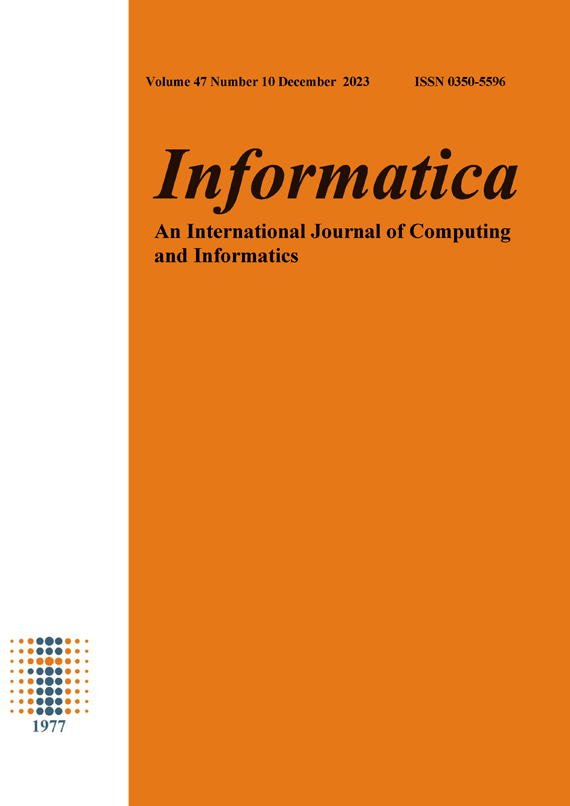Variational Iteration Method for solving Electrocardiography inverse problem
DOI:
https://doi.org/10.31449/inf.v47i10.5260Abstract
In this paper, the variational iteration method is proposed as a solution to an inverse problem in electrocardiography. The aim is to obtain approximate solutions to the model with the lowest error rate. This is crucial in determining the patient's heart activity and facilitating rapid medical intervention. The main challenges in accurately computing clinically relevant maps of cardiac depolarization stem from the ill-posed nature of the continuous problem and the presence of noise in the data. To tackle these difficulties, we have developed regularizing iterative algorithms based on domain decomposition techniques. These algorithms reformulate the inverse problem into several cases, depending on the solution area. This formulation has enabled us to establish a new stopping criterion that is more responsive and accurately reflects the behavior of the error on the non-accessible part of the boundary. The numerical results obtained through the variational iteration method demonstrate that the proposed approach effectively captures the error behavior on the non-accessible boundary. An additional advantage of these approaches is their ability to reduce execution time through their parallelized versions. Thus, we have successfully demonstrated the effectiveness of these methods in terms of quality (accuracy of approximation) and quantitative aspects (computation cost).
References
David B. Geselowitz W. T. Miller III, “A BIDOMAIN MODEL FOR ANISOTROPIC CARDIAC MUSCLE”, Annals of Biomedical Engineering, Vol. 11, pp. 191-206, 1983.
Dilmini Wijesinghe and Bradley J. Roth, “ Mechanical bidomain model of cardiac muscle with unequal anisotropy ratios”, PHYSICAL REVIEW E 100, 062417 (2019).
Pagani S, Dede’ L, Manzoni A, Quarteroni A. “Data integration for the numerical simulation of cardiac electrophysiology. ” Pacing Clin Electrophysiol. 2021;44:726–736.
Athavale ON, Avci R, Cheng LK and Du P (2023), “Computational models of autonomic regulation in gastric motility: ” Progress, challenges, and future directions. Front. Neurosci. 17:1146097. doi: 10.3389/fnins.2023.1146097.
Richard H. Clayton, Yasser Aboelkassem, Chris D. Cantwell, Cesare Corrado, Tammo Delhaas, Wouter Huberts, Chon Lok Lei, Haibo Ni, Alexander V. Panfilov, Caroline Roney and RodrigoWeber dos Santos, “ An audit of uncertainty in multi-scale cardiac electrophysiology models”, Phil. Trans. R. Soc. A, 378: 20190335.
Barbara M. Johnston, Peter R. Johnston, “ Approaches for determining cardiac bidomain conductivity values:progress and challenges” , International Federation for Medical and Biological Engineering 2020. https://doi.org/10.1007/s11517-020-02272-z.
Yousif, Afaf N., and Ahmed Farooq Qasim. “Exact Solutions to a Mathematical Model Representing Avascular Tumor Growth Via Exponential Function Method. ” Utilitas Mathematica 120 (2023): 99-112.
Ji-Huan He, “Variational iteration method Ð a kind of non-linear analytical technique: some examples”, International Journal of Non-Linear Mechanics 34 (1999) 699-708.
X. Wang, Q. Xu and S.N. Atluri, “Combination of the variational iteration method and numerical algorithms for nonlinear problems”, Applied Mathematical Modelling, https://doi.org/10.1016/j.apm.2019.10.034.
Hijaz Ahmad, “ Variational iteration algorithm-I with an auxiliary parameter for wave-like vibration equations”, Journal of Low Frequency Noise, Vibration and Active Control 0(0) 1–12.
Ji-Huan He, Habibolla Latifizadeh, “ A general numerical algorithm for nonlinear differential equations by the variational iteration method”, International Journal of Numerical Methods for Heat & Fluid Flow, 10.1108/HFF-01-2020-0029.
Wei He, Hua Kong and Yan-Mei Qin, “ Modified variational iteration method for analytical solutions of nonlinear oscillators”, Journal of Low Frequency Noise, Vibration and Active Control 2019, Vol. 38(3–4) 1178–1183.
Dennis Ogiermann, Luigi E. Perotti and Daniel Balzani, “Towards a physiologically accurate ECG from numerical simulations: comparative analyses in a simplified tissue model”, Proc. Appl. Math. Mech. 20:1 (2020).
HILAL, Mohammed Azeez. “Domain decomposition like methods for solving an electrocardiography inverse problem” 2016. PhD Thesis.
Dawood, Lafta, Abdulrahman Sharif, and Ahmed Hamoud. “Solving higher-order integro differential equations by VIM and MHPM. ” International Journal of Applied Mathematics 33, no. 2 (2020): 253.
Downloads
Published
Issue
Section
License
I assign to Informatica, An International Journal of Computing and Informatics ("Journal") the copyright in the manuscript identified above and any additional material (figures, tables, illustrations, software or other information intended for publication) submitted as part of or as a supplement to the manuscript ("Paper") in all forms and media throughout the world, in all languages, for the full term of copyright, effective when and if the article is accepted for publication. This transfer includes the right to reproduce and/or to distribute the Paper to other journals or digital libraries in electronic and online forms and systems.
I understand that I retain the rights to use the pre-prints, off-prints, accepted manuscript and published journal Paper for personal use, scholarly purposes and internal institutional use.
In certain cases, I can ask for retaining the publishing rights of the Paper. The Journal can permit or deny the request for publishing rights, to which I fully agree.
I declare that the submitted Paper is original, has been written by the stated authors and has not been published elsewhere nor is currently being considered for publication by any other journal and will not be submitted for such review while under review by this Journal. The Paper contains no material that violates proprietary rights of any other person or entity. I have obtained written permission from copyright owners for any excerpts from copyrighted works that are included and have credited the sources in my article. I have informed the co-author(s) of the terms of this publishing agreement.
Copyright © Slovenian Society Informatika








